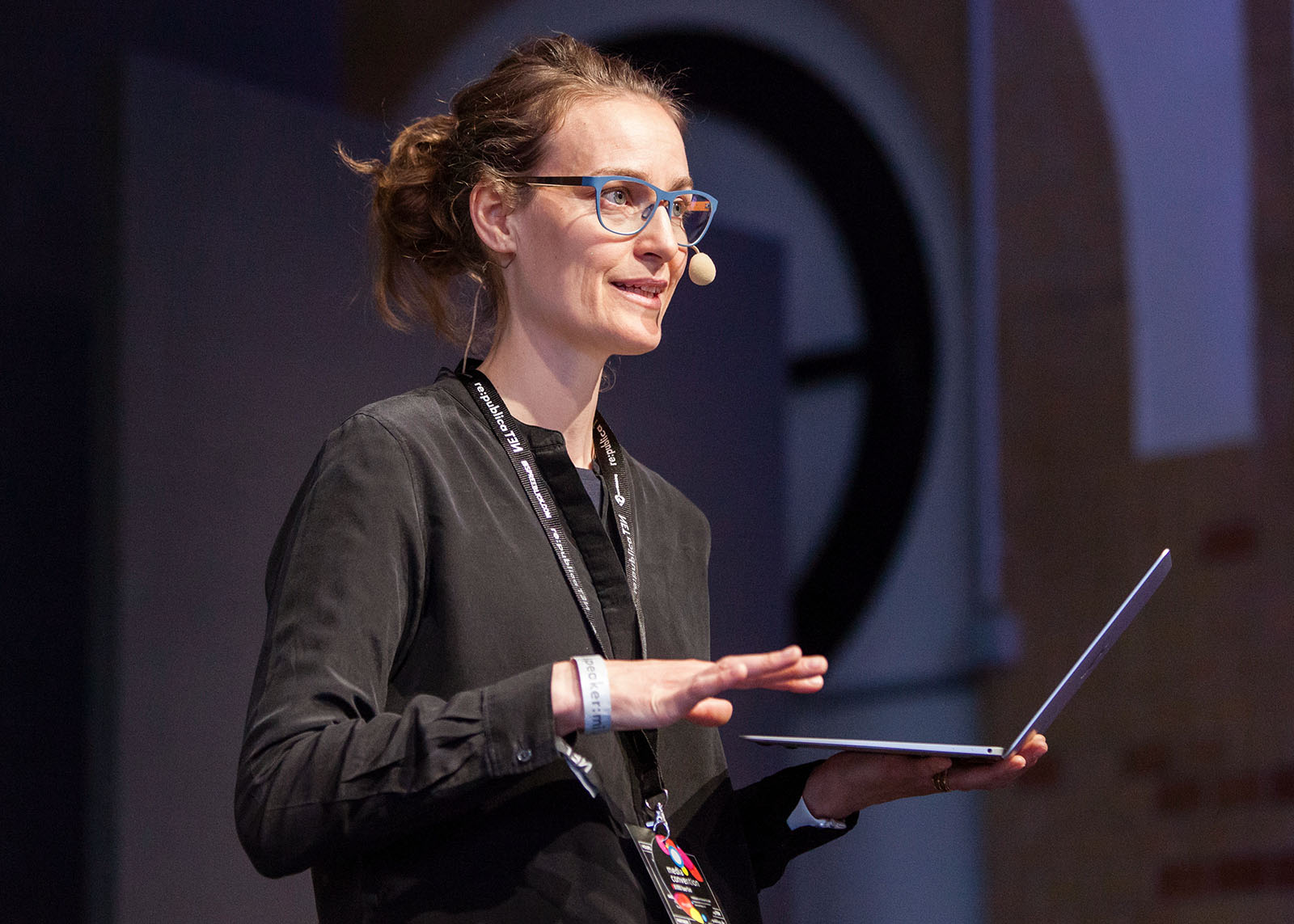Tech companies building products that focus on women’s health still struggle to attract VC funding.
When serial product manager Audrey Tsang first met with the folks at the period-tracking app Clue, she was instantly drawn to the diversity of the leadership team. After holding manager, director, and lead product roles at tech powerhouses like Yahoo, Yelp, and Pinterest, Tsang became the co-CEO of Berlin-based Clue in 2021. It’s the first team she’s worked on that’s majority female. That gives the organization a different dynamic and a different feel, she says, and that may be important for the future. She insists that in the current economic climate, leaders of femtech companies need to get creative to raise funding since VC investors are still majority male.
In 2022, VC funding for companies that make tech for menstrual tracking, fertility services, maternal health support, gynecological devices, and menopause apps reached $840 million, following a similarly successful year in 2021. Projections previously predicted that the market value of the industry would reach more than $103 billion by 2030, but attitudes have shifted and there are various forces at work that are still holding femtech back.
“It’s sad,” Tsang says, “but there still is a gender health gap that we have a lot of work to do as a society as a whole to close.”
The rise of VC funding for femtech
The founder and former CEO of Clue, Ida Tin, coined the term “femtech” in 2016 to describe a tech product or service focused on women’s health. Current co-CEO Tsang believes strongly in the power of the industry, and they are still raising money to prove it, announcing a €7 million ($7.6 million) funding round in April 2023 and €1.4 million ($1.5 million) in a crowdfunding round for users.
“Femtech is literally, by definition, technology built for half the world’s population,” Tsang says. “Remember that that’s an incredibly big market opportunity.” Investors are always going to see the market opportunity.
Clue is hardly the only successful femtech company out there. Progyny, a New York-based startup that administers fertility benefits for employers, went public in 2019 with a valuation of more than $1 billion. Another New York femtech company called Tia, which operates hybrid in-person and virtual women’s health care clinics, announced a $100 million series B funding round in 2021. And in 2022 Maven Clinic, a virtual clinic focusing on women’s and family health that’s also based in New York, announced a $90 million series E round led by General Catalyst, a VC firm in Cambridge, Massachusetts.

Hunter Walk, former product lead at Google and Mattel and current partner at San Francisco’s Homebrew VC, says that the femtech companies his firm invests in have shown that there’s both a market need and a business for femtech. But the investors at Homebrew have always been out-of-the-box thinkers and don’t follow the same rules as traditional VCs who might be more wary of investing in femtech.
Walk says raising money for femtech is more difficult than it looks. “It’s not enough to just say ‘there are 165+ million women in the U.S.’ or ‘the global market size for women’s health care is at least $42 billion,’” Walk argues.
Safe, boring, and recession-proof?
In early 2023 the World Economic Forum estimated that a $300 million investment in research focused on women could yield a return of $13 billion. And yet, the changes in the macroeconomic climate that have affected all tech investments recently haven’t spared femtech.
Maneesh Jain has been in the field of genomics since its inception in the 1990s and is currently the CEO and co-founder of San Francisco-based Mirvie, an RNA platform that uses machine learning to detect pregnancy complications through a blood test.
“When the economy tanks, discrimination feels justified.”
“For around 12 years or so it was kind of the golden era of more readily available funding because interest rates were so low. And that has completely changed in the last year and a half,” Jain says.
According to Jain, even as tech and biotech companies were experiencing a boom in VC investments, femtech was already lagging behind. Jain served as CEO of Cirina, a startup dedicated to early cancer detection that was later purchased by another cancer-detecting company, Grail. Now as the CEO of Mirvie, Jain says he sees firsthand the difference between funding for femtech companies and cancer or cardiology companies. “Everything else being equal, coming from oncology to women’s health, it’s much harder to raise money for sure. We’ve been pretty successful at fundraising, but it’s not on the scale that we did at Grail,” Jain says.
Jain is male, but many femtech companies are founded by women and according to Pitchbook, U.S. VC capital deal flow had been trending up for women founders since 2008, until Q2 2022 when it began to trend downward. “When the economy tanks, discrimination feels justified,” Ruth Foxe Blader, a partner at the London VC firm Anthemis Group, told TechCrunch earlier this year. Downturns, she says, are times when “Managers double down on what they perceive as ‘safe’ and ‘boring.’”
Breaking in and through cultural stigmas and taboos
Femtech founders face particular problems when delivering their elevator pitches to venture capitalists who, more often than not, lack vaginas.
Tsang says that when she’s raising money for Clue she sometimes jokes that she’s not sure “if it’s going to be like Sex Ed 101 or an actual VC pitch that you’re going into.” Oftentimes, she says, “It’s a little bit of both.”
Jain agrees. “When we have female investors, they get it much more quickly because they’ve experienced [pregnancy complications] more closely, either personally or through family. And then if it’s a non-female investor audience, which is a lot of the audience, then I think you’ve got to create points of relatability.”
Most male VCs probably don’t understand the inner workings of enterprise cloud software, but that lack of knowledge doesn’t stop them from investing in those products.
Hunter Walk regularly sees bias against tech designed for women. “Given the disproportionate number of men in venture capital, it’s often that female entrepreneurs in the femtech space find themselves pitching investors who haven’t experienced firsthand the problems the startup is looking to solve.” He points out that women investors struggle too, “When you have female health care investors, some can worry about getting pigeonholed if they back femtech.”

Tsang contends that taboos around menstruation, menopause, fertility, and other women’s health issues are the real problem. And sometimes it’s not just men who don’t fully understand the intricacies of women’s health. “We hear this a lot of times from our user community that they don’t even know enough about their menstrual reproductive health.”
Another struggle for femtech companies in the past few years comes from navigating the complexities of the health care system and facing regulatory hurdles that often depend on research and data, a lot of which fails to include women.
Historically, clinical trials have often underrepresented women, leading to a lack of understanding about gender-specific responses to medications and treatments. Before the women’s movement in the 1970s, women’s health concerns were widely seen as inconsequential. Plus, drug testing on all women of “childbearing potential” (even those using contraception) was seen as dangerous, so drug developers have only been legally required to include women in clinical trials since the 1990s.
Even now, many of the world’s problems that femtech is trying to solve require research from a more diverse population. Recent studies have shown that women continue to be underrepresented in clinical trials, especially by the pharmaceutical industry. One recent study showed that women make up only 29–34 percent of clinical trial participants. FDA trials for a recently approved blood cancer drug included only 1.8 percent Black participants, while 20 percent of all people diagnosed with blood cancers in the United States each year are Black. The only area lacking in research more than cis women’s health is trans people’s health.
Walk says that when male investors aren’t experienced in health care startups, they often respond to a pitch from a tech company by saying they need to ask their wives or daughters. “In addition to [there] being a limited amount of market research—to say the least,” Walk argues. “[This] also biases towards conclusions based on a very specific socioeconomic cohort.”
Femtech needs a rebrand
Experts say femtech can help improve maternal mortality, stop misdiagnoses, close racial disparities, and solve other persistent problems with women’s health. But a few big changes must happen.
“We still do not have enough female leaders, whether it’s in Congress or in venture firms, or CEOs or entrepreneurs.”
The first is representation. “We still do not have enough female leaders, whether it’s in Congress or in venture firms, or CEOs or entrepreneurs,” says Jain. “The ratios are still not where we need them to be.”
Currently and historically there has been a larger percentage of women working in health care than in the rest of corporate America. However, representation for women in decision-making roles is still lower. Some 75 percent of entry-level health workers are women, while only 32 percent of the health care C-suite is made up of women. The stress of the pandemic was particularly hard on these women. The attrition rate for women leaders in health care was about 5 percent higher than for men during the pandemic, according to McKinsey.
One of the biggest problems with femtech might be the term “femtech” itself. It means different things to different people, and not all of them are positive. A 2022 study published in the Journal of Medical Internet Research found that femtech is “often geared toward health-literate, socioeconomically privileged, and/or relatively healthy white cis women.” Others find it non-inclusive to the trans community.
Jain told proto.life that he sees a lot of what he calls “Femtech 1.0”—products geared toward convenience apps “and and less so on the fundamental biomedical innovation that has happened in oncology and cardiology.”
“We typically don’t use the term, although I can see why it’s a useful term,” Jain says.
When it comes to convincing investors, Tsang agrees. “You have to find a way to connect with the perspective of whoever you’re pitching to and, in the case of femtech, sometimes it takes honestly forgetting that it’s femtech, and remembering that it’s just technology.”
The idea that women’s health problems are still not taken seriously is infuriating to some and often it takes that kind of anger and energy to create real change.
Whether it’s period tracking or an RNA platform for detecting pregnancy complications, Tsang and Jain both insist that using technology to solve women’s health problems is a massive opportunity for investors.
“I think there’s now an increasing recognition that areas like cardiology and oncology have attracted lots of investment dollars, and they’ve made a lot of progress, but they’re also kind of oversubscribed,” says Jain. He argues that there are thousands of companies chasing those investments already and that technology focused on women’s health is the place to look for future growth. “I can’t think of a better [investment] than pregnancy health or women’s health because it’s impacting such a large population.”
“I think we’re evolving to a place where we actually need to assume that this isn’t a niche anymore,” says Tsang. “This is actually quite a big market and we’ve got to raise and pitch as if that’s already the truth.”













